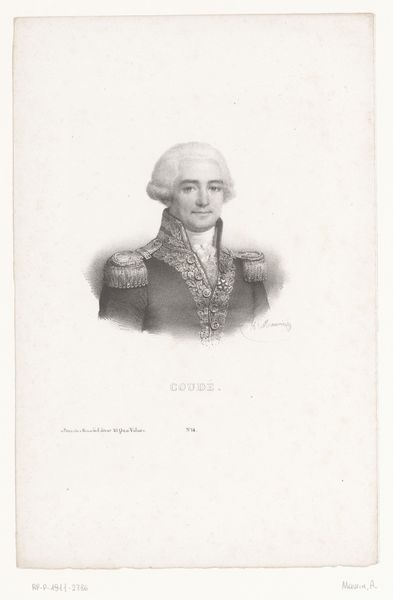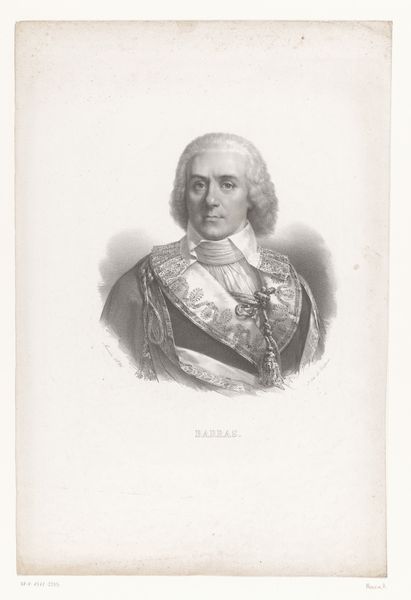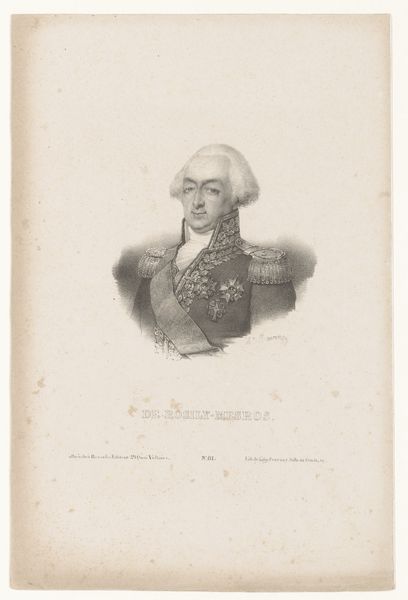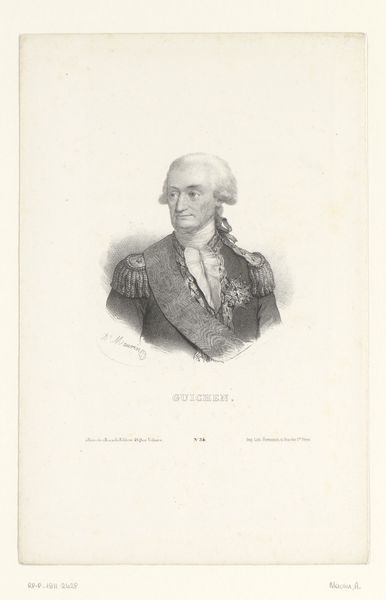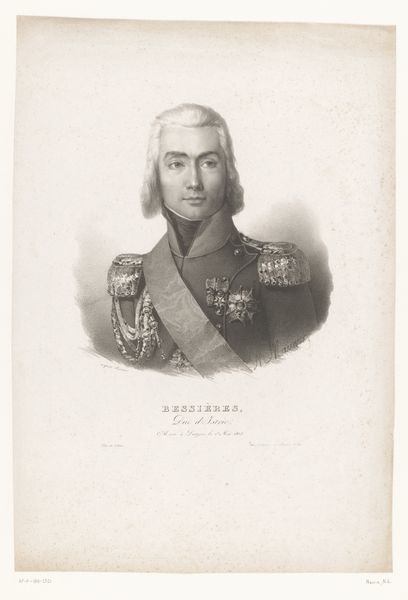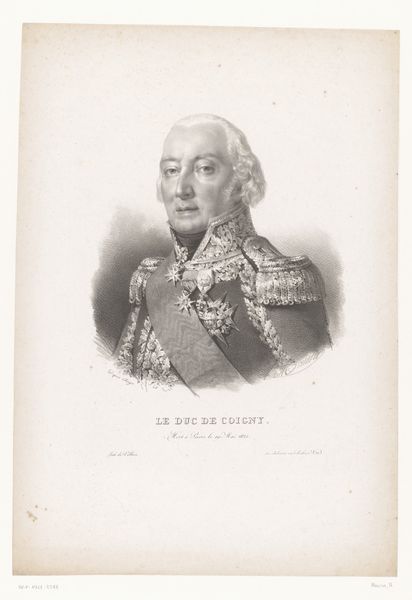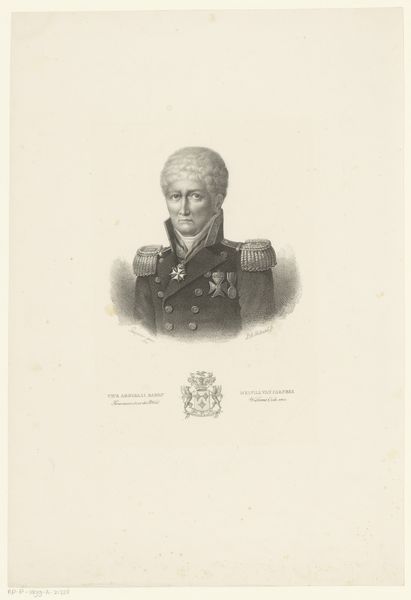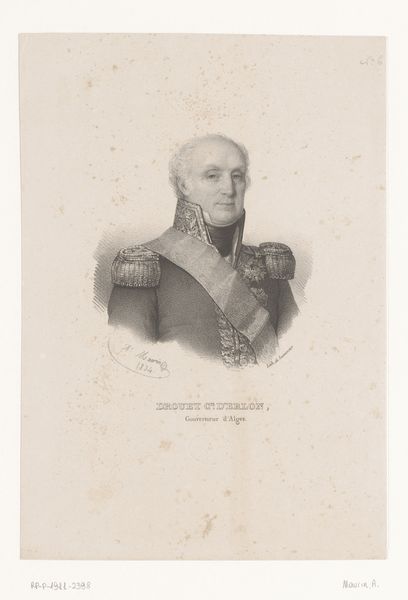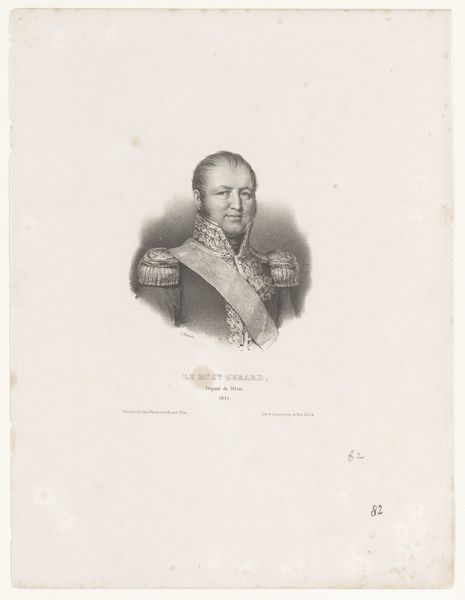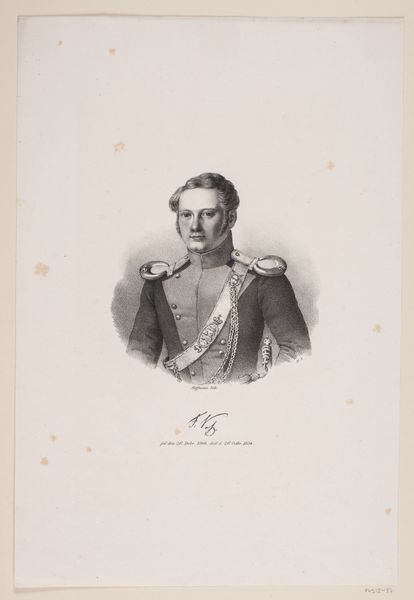
print, graphite
#
portrait
#
neoclacissism
# print
#
charcoal drawing
#
graphite
#
graphite
Dimensions: height 271 mm, width 171 mm
Copyright: Rijks Museum: Open Domain
Curator: Looking at this print, entitled "Portret van Pierre César Charles de Sercey," we see it was made sometime between 1830 and 1853. Antoine Maurin is credited as the artist behind it. Editor: It strikes me as an image that projects such an undeniable air of authority. His gaze, the crisp uniform... there’s almost an unsettling feeling of detached power emanating from this Pierre César Charles de Sercey. Curator: And you are right, it’s difficult to ignore the crisp details rendered through graphite. When we think about how prints were made, especially portrait prints like this, we need to consider the labor. Prints like this would have been produced as commercial objects meant for consumption. A print like this suggests this Pierre Césare was powerful enough to have multiples produced and sold. Editor: The visual language absolutely reinforces a strict social hierarchy. It serves as a symbol of class and rank, further emphasizing the identity and social position of the sitter within a rigid system. Who exactly was this man, what impact did he have in the 19th century? Curator: Pierre César Charles de Sercey, served as a Dutch admiral, making a name for himself within the Napoleonic wars. With regard to its materials, let’s take note of the paper—its weight, its texture—because this can reveal about the quality, access, and original purpose for which this print would have been put in circulation. Also consider how the ink impacts texture. Editor: Yes, all of these factors give the piece resonance and situate this subject within a distinct period, a study of class and military stature through the material of its very existence. A true indication of its function, circulating power and its influence among Dutch society. Curator: Absolutely, analyzing those printmaking techniques helps us understand how Maurin, in his role as the artist, managed to achieve such fidelity to detail in rendering a high-ranking person. The artistic intent is completely aligned to materials available. Editor: Through today's critical lens, considering prints like this gives rise to examining social systems and those that are lost through the recording and archival of others, those left unrecorded. It calls to attention questions of the underrepresented within portraiture of the time, giving depth to portraiture beyond purely the act of recording faces. Curator: I agree. I am fascinated by how closely related print making has been to democratization of imagery since it’s creation, leading to interesting insight when examining who gets represented and by what means. Editor: Agreed! This allows us to see not only how identity and legacy can be molded by even just a print. Thank you.
Comments
No comments
Be the first to comment and join the conversation on the ultimate creative platform.
